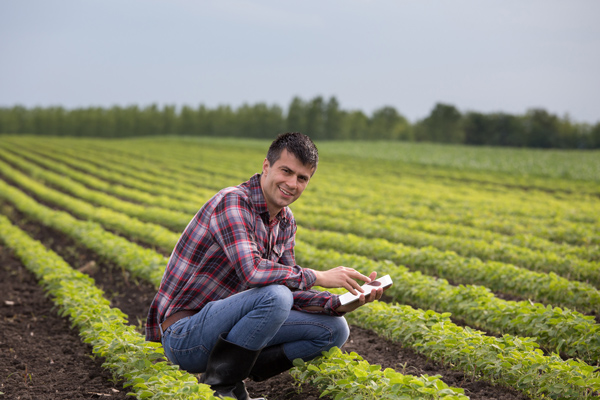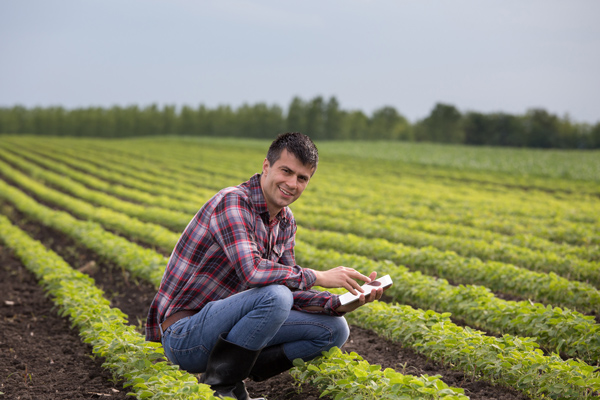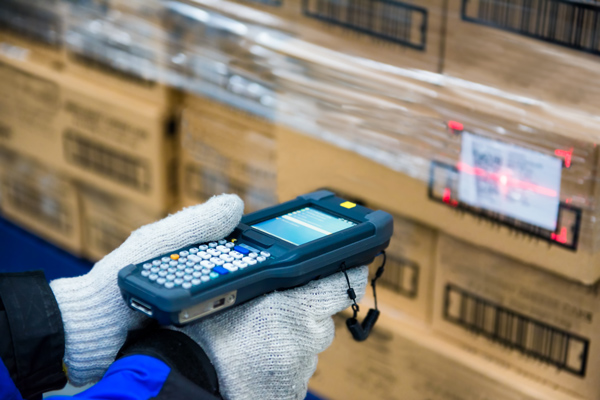Overview
- The food and beverage industry must adapt to disrupted supply chains, urgent consumer safety and unpredictable demand.
- Top companies such as Nestle, Kellogg’s and others have pivoted operations to meet these challenges.
- Warehouse automation in the form of mobile barcoding and data collection are vital technologies for survival in a pandemic climate.
The food and beverage industry is a vital part of our economy. This has become even more apparent as manufacturers and warehouses adjust to irregular surges in demand with significantly disrupted supply chains caused by COVID-19.
The industry consistently overcomes significant challenges. Even prior to the pandemic, food safety has remained a persistent consumer concern. 56% of consumers were actually more concerned about food safety than they were a year ago. 46% have altered food choices over food safety concerns.
Today, the need for cost-saving efficiency and planning agility is needed in addition to food traceability compliance.
In this article, we will explore past use cases from around the food and beverage industry. In each, warehouse automation technologies, such as mobile barcoding and automated data collection, have helped companies reduce spend and improve KPI performance.
Each of these businesses continues to thrive and adapt today.
Nestle Incorporates Warehouse Logistics to Improve Coffee Supply Chain
Recognizing a need to improve the efficiency of its global supply chain, Nestle built a storage and shipment facility in Vietnam near its top coffee bean producers. The multinational corporation is also using warehouse automation technology as a way to make its supply chain logistics more effective and cost-efficient.
As company supply chains become more diverse, business leaders need to implement new strategies to mitigate the current and emerging risks of today. By building a warehouse facility closer to farms and consumers, Nestle is able to quickly get goods to market while minimizing shipping-related concerns — especially relevant with today’s worldwide pandemic-related disruptions.
ALSO READ: How to Overcome Obstacles in the Dairy Supply Chain »
How a Mobile Warehouse Supports International Operations
For food companies building new modern facilities in different countries, like Nestle, mobile data collection solutions, such as mobile barcoding, are a necessity to ensure smooth, efficient material flows. Otherwise, material counts will be slow and inaccurate, leading to bloated handling costs and substandard throughput.
When capturing inventory data from multiple sites to a central ERP, the need for real-time data exchange to and from those locations should be the goal. Mobile barcoding for ERP and other rapid data collection technologies can make that goal a reality.
The combination of proven supply chain logistics and warehouse automation technology equip food and beverage enterprises with the flexibility to quickly respond to global and market challenges.
“While there may be a limited number of automated solutions for smaller operators, the ROI can be compelling. In certain areas, an automated solution can replace the labor of three men.”
– Dwayne Wanner, President, Highlander Brew Co.
Supporting Offline and Remote Warehouse Inventory
Mobile barcoding is uniquely designed to provide foundational support for distribution and manufacturing for international food and beverage operations.
Mobile barcoding solutions can be designed to incorporate fluid online/offline data collection with mobile and stationary devices. This is especially important in places where network connections are inconsistent or if you have a facility with areas where the connection is unreliable or just doesn’t reach.
For example, workers may need to collect data in walk-in freezers or cold rooms where network connectivity is unavailable. Mobile off-network data collection capabilities allow work to continue without interruption inside and outside the freezer.
KEEP READING: Blue Bell Creameries succeeds with offline mobility »
Kellogg’s Adds Supply Chain Mobility, Traceability
Many companies have integrated some form of mobile barcoding solutions into their operations to track products more easily throughout the supply chain. “Track-and-trace” or “traceability” software offers a simple, automated solution to support compliance and accuracy.
“Working with food can be a messy business where the food supply chain starts on the farm and ends on the consumer’s plate,” said Kate Kennett, a software development expert, to ERP Cloud News. “In between this is the manufacturer who has to manage incoming raw materials, outbound deliveries, use-by dates and strict food safety regulations. Juggling all of these requirements where profit margins are small can be quite tricky. Having effective…software in place can help manage the many facets of the production line.”
Mobile Barcoding Solutions for Traceability and Audit Protection
Mobile barcoding software is a cost-effective and robust track-and-trace solution. Material data is captured accurately and in real time with multi-dimensional data granularity. This automatically records every movement of the raw material, ingredient, finished product or scrap throughout production and distribution.
In the event of an ingredient recall or mandatory audit, companies can quickly track and trace the compromised ingredient. Only the affected product needs to be recalled from distribution. This means companies can act quickly to mitigate potential losses, both monetarily and in customer trust.
See Also: Why Traceability Matters More Than Ever »
Kellogg’s Achieves Traceability with Barcode Scanning
Breakfast cereal and snack company, Kellogg’s, implemented barcode software to improve its supply chain traceability. It uses the same barcode scanner technology throughout its U.K. warehouses and distribution centers. The company’s operations are entirely dependent on barcode scanners to manage products, order fulfillment and distribution throughout its supply chain.
The company uses a fleet of handheld scanners that transmit data wirelessly to its warehouse management system. The devices are used to track incoming shipments of raw materials from suppliers, to pick shipment orders and to send out finished products that need to be distributed to stores.
Handheld devices may also be used to produce custom barcode and RFID labels that can be attached to shipments, making it faster and easier for warehouse staff to produce information that can be used to identify products, packages and pallets.
By using automated data collection with barcodes throughout the process, Kellogg’s can trace all the products and materials that go into and come out of its warehouses, trucks, stores and supply chain partners. This provides the company with the ability to have greater visibility into its processes, remain in compliance with regulations, and identify areas that could be made more efficient.
ALSO READ: Tesco Improves Supply Chain by Automating Data Collection »
Moosehead Breweries Uses SCM Barcoding as Competitive Weapon
Collecting and analyzing data is becoming increasingly important for many businesses. Automating that data adds up to significant improvements in product quality and operational efficiency.
Moosehead Breweries, for example, noticed significant gaps in their performance during a competitor analysis, most significantly in automation. By replacing previous manual processes with automated identification and data collection, or AIDC, the company has seen substantial improvements in productivity.
Mobile barcoding is built on the same core AIDC technology.
Dwayne Wanner, president of Highlander Brew Co., explained that automated processes are fairly new to the brewing industry, with smaller companies lagging far behind the biggest, well-automated businesses.
“Some of those facilities are so big you can ride in golf carts and you’d be hard put to find a human being,” Wanner told the source. “These places are very, very efficient. The scale of these operations has demanded they be efficient or die. While there may be a limited number of automated solutions for smaller operators, the ROI can be compelling. In certain areas, an automated solution can replace the labor of three men. The terms of reference for ROI are very short in those scenarios.”
In Moosehead’s scenario, the combination of an automated data collection system and SCM barcoding enabled the company to improve inventory management. Specific changes made to packing processes have allowed Moosehead to reduce assets by 70% without negatively affecting production volumes. In addition, the company used data to make improvements to its labeling system and canning line.
Businesses can implement automated data collection to reach the next level of productivity. At the same time, such initiatives can lead to reduced waste, lower capital costs and saved space due to improved inventory management.
RELATED: Metal in the Macaroni? The Importance of Asset Management in Food Production »
Conclusion
Although these international food and beverage businesses found success, many organizations have not yet modernized their inventory processes. Automated data collection remains a supply chain best practice. However, more modern and robust ADC solutions like mobile barcoding may be necessary to survive future unpredictability.
Today’s pandemic food and beverage market makes this need even more urgent. Companies need to be agile to quickly adapt to rising consumer demand and disrupted supply chains.
Traceability throughout the supply chain will also remain a consistent concern, as will finding ways to safeguard and augment this essential workforce.









